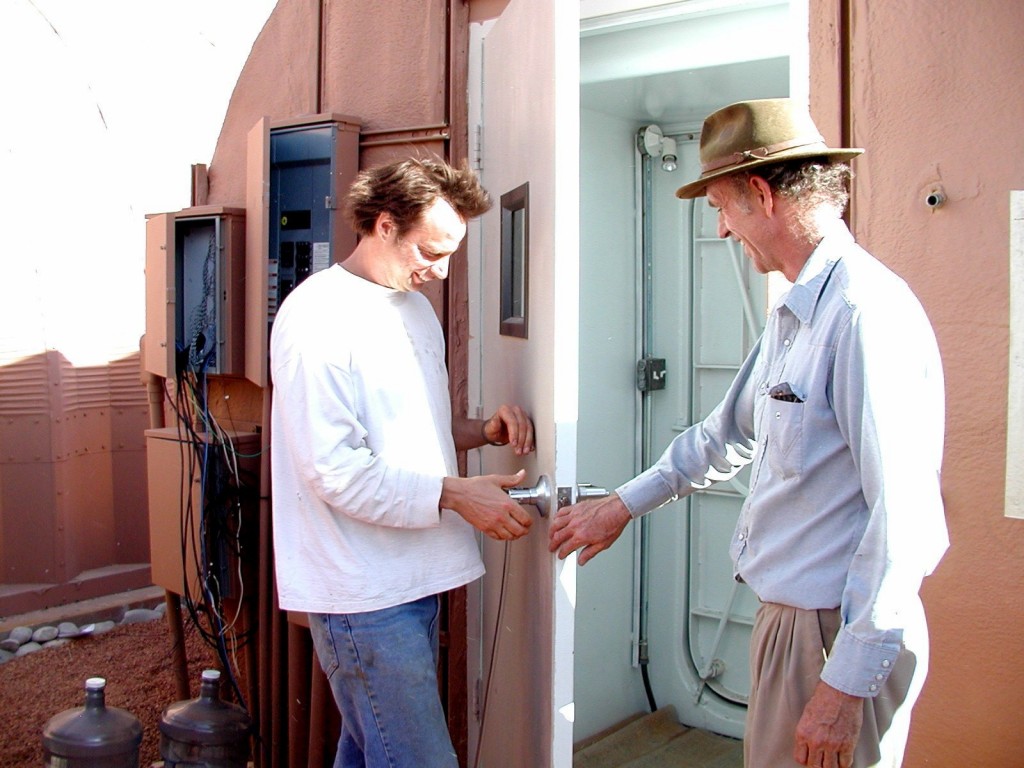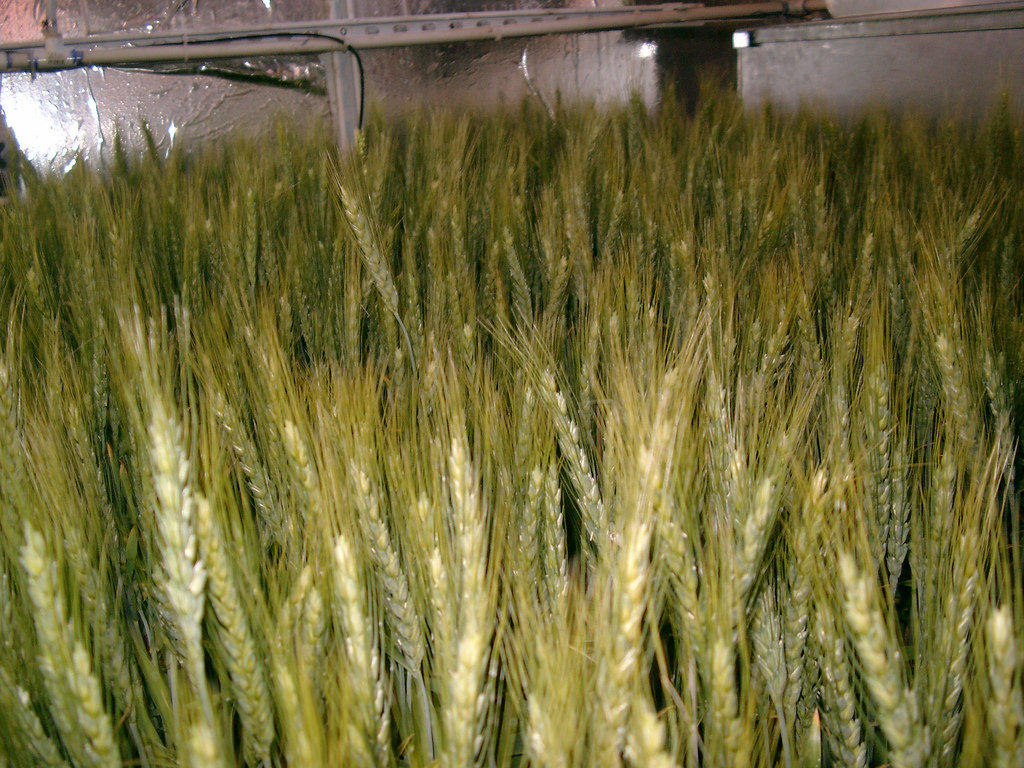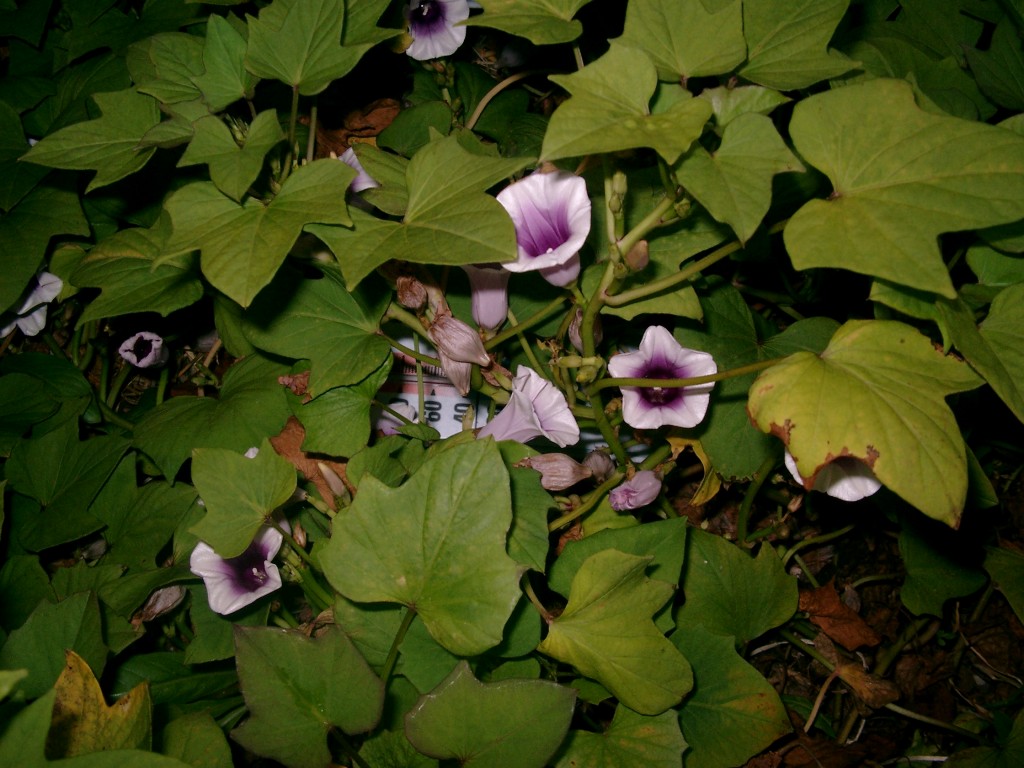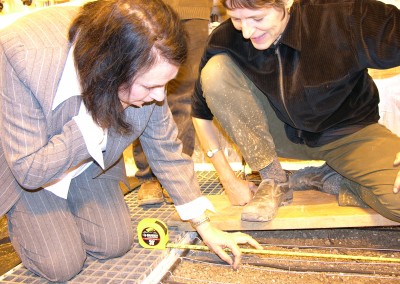The Laboratory Biosphere
The Laboratory Biosphere Experimental Chamber is a custom designed cylindrical steel chamber, measuring 12 feet in diameter and 12 feet in length.
The chamber has an internal capacity of 1200 cubic feet and is connected to a variable Volume Chamber (the “Lung”) which, depending on temperature and humidity conditions within the total system, varies in volume between zero and 400 cubic feet.
This gives a total volume for both chamber and lung together of between 1200 and 1600 cubic feet. The Laboratory Biosphere is a highly sealed materially-closed system, designed to carry out cutting-edge experiments that will further our understanding of the engineering and science of Biospherics. In particular, the facility has been designed:
- to experiment with a sustainable soil-based agricultural system;
- to study the biogeochemical cycling of elements such as Carbon, Nitrogen, Phosphorous and other trace elements;
- to test candidate food crop varieties and evaluate optimal lighting and other environmental growing conditions.
The Laboratory Biosphere was designed and built by the Biosphere Foundation, Biospheric Design, and the Institute of Ecotechnics. It is now owned and operated by Biospheric Design, a division of Global Ecotechnics Corporation. For further information about Laboratory Biosphere, please contact Global Ecotechnics.
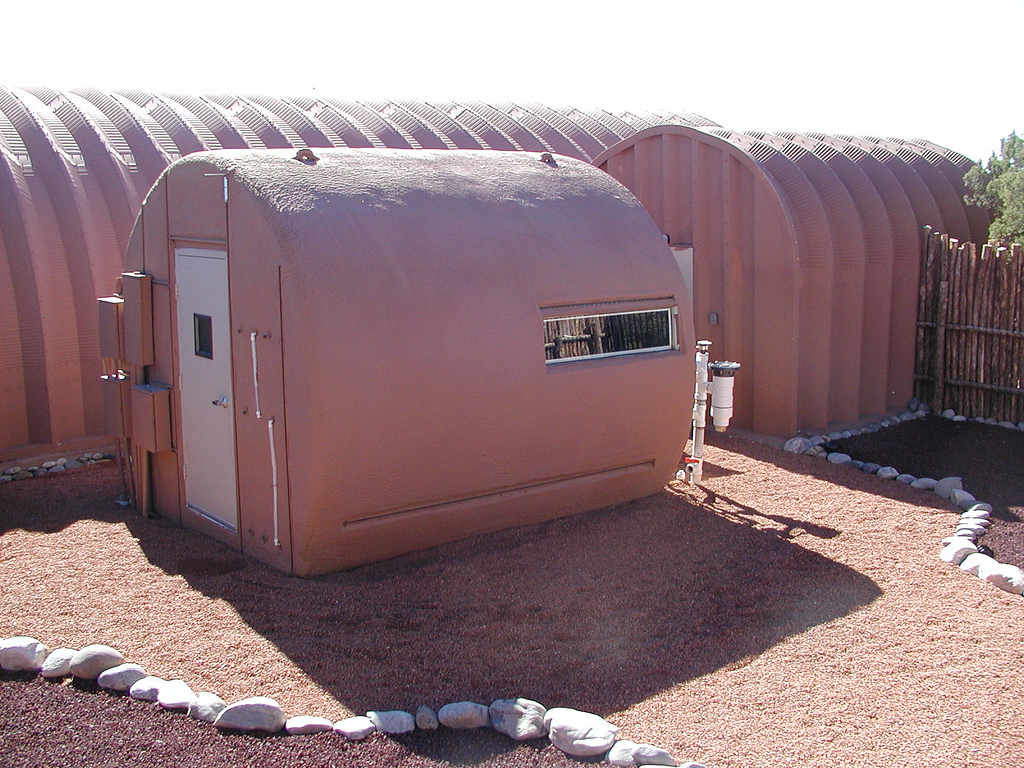
Laboratory Biosphere – Santa Fe, New Mexico. © Abigail Alling, Biosphere Foundation
Our experiments
Papers relating to the Mars on Earth® Project, for which the Laboratory Biosphere experimental chamber served as a prototype and working model.
- The Mars On Earth® Project: Lessons Learned from Biosphere 2 and Laboratory Biosphere Closed Systems Experiments. To view the paper, click here.
- Light, Plants and Power for Life Support on Mars. To view the abstract, click here.
- Crop Yield and Light/Energy Efficiency in a Closed Ecological System: Two Laboratory Biosphere Experiments. To view the abstract, click here.
- Effects of a Spaceflight Environment on Heritable Changes in Wheat Gene. To view the abstract, click here.
- Atmospheric dynamics in the “Laboratory Biosphere” with wheat and sweet potato crops. To view the abstract, click here.
- Closure as a Scientific Concept and its Application to Ecosystem Ecology and the Science of the Biosphere. To view the abstract, click here.
- Human Factor Observations of the Biosphere 2, 1991-1993, Closed Life Support Human Experiment and Its Application to a Long-Term Manned Mission to Mars. To view the abstract, click here.
- Cowpeas and pinto beans: yields and light efficiency of candidate space crops in the Laboratory Biosphere closed ecological system. COSPAR 2006 in Beijing, in press Adv. Space Research
- Atmospheric dynamics of combined crops of wheat, cowpea, pinto beans in the Laboratory Biosphere closed ecological system. To view an abstract of the paper, click here.
- Integration of lessons from recent research for “Earth to Mars” life support systems. To view an abstract click here.
- “Modular Biospheres” – A new platform for education and research. To view the abstract, click here.
- Soil and Crop Management Experiments in the Laboratory Biosphere: An Analogue System for the Mars On Earth®Facility. To view the abstract, click here.
- Advantages of Using Subsurface Flow Constructed Wetlands for Wastewater treatment in Space Applications: Ground-Based Mars Base Prototype. To view the abstract, click here.
- Technical review of the Laboratory Biosphere closed ecological system facility. To view the abstract, click here.
- Development and Research Program for a Soil-based Bioregenerative Agriculture System to Feed a Four Person Crew Mars Base. To view the abstract, click here.
- Initial Experimental Results from the Laboratory Biosphere Closed Ecological System Facility. To view the abstract,click here.
- The Legacy of Biosphere 2 for the Study of Biospherics and Closed Ecological Systems. To view the abstract, click here.
- Earth Applications of Closed Ecological Systems: Relevance to the Development of Sustainability in Our Global Biosphere. To view the abstract, click here.
- People Challenges in Biospheric Systems for Long-Term Habitation in Remote Areas, Space Stations, Moon and Mars Expeditions. Life Support and Biosphere Science, Vol 8 pp. 67 – 70, 2002.
- Potential integration of wetland wastewater treatment with space life support systems. To view the abstract, click here.
- The Design Approach for Mars On Earth®, A Biospheric Closed System Testing Facility for Long-Term Space Habitation. Allen & Alling. 2002. American Institute of Aeronautics and Astronautics, Inc.
- “Living off the land”: resource efficiency of wetland wastewater treatment. To view the abstract, click here.
- A Simulation of an Inhabited Biospheric Mars Base to be Constructed and Operated in the Egyptian Sahara. Allen, Alling & El-Baz. 1998. Presented at the third International Conference of Life Support and Biosphere Science, Jan 11th – 15th, 1998.



